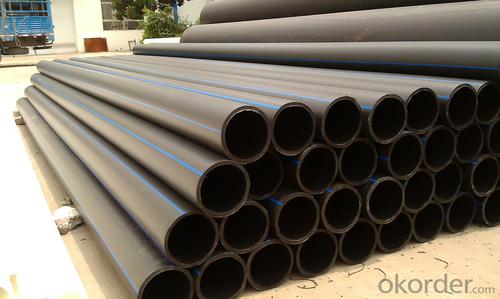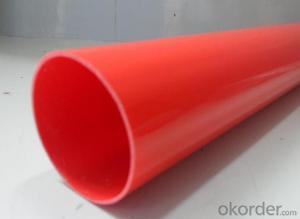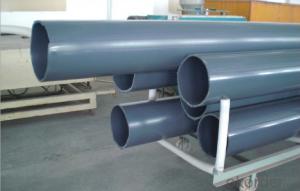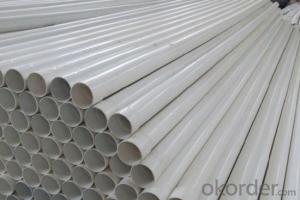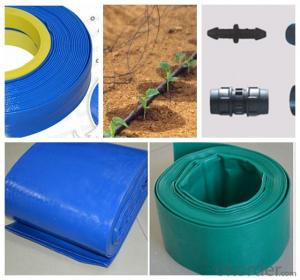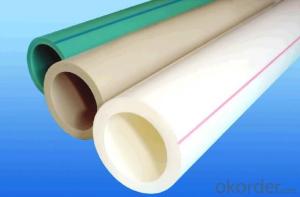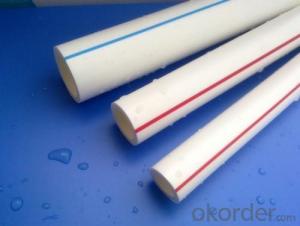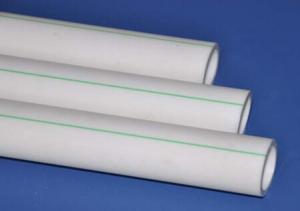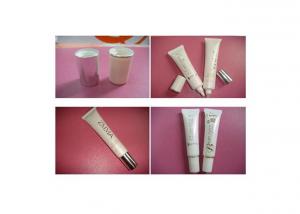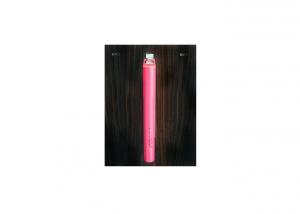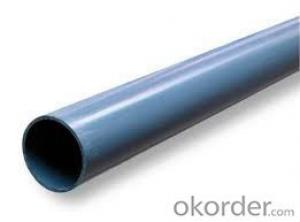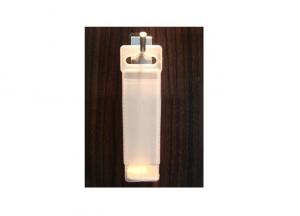Plastic Tubes HDPE Pipe ISO4427-2000 DN180
- Loading Port:
- China Main Port
- Payment Terms:
- TT OR LC
- Min Order Qty:
- -
- Supply Capability:
- -
OKorder Service Pledge
OKorder Financial Service
You Might Also Like
Physical properties[edit]
Polyethylene is a thermoplasticpolymer consisting of long hydrocarbon chains. Depending on the crystallinity and molecular weight, a melting point and glass transition may or may not be observable. The temperature at which these occur varies strongly with the type of polyethylene. For common commercial grades of medium- and high-density polyethylene the melting point is typically in the range 120 to 180 °C (248 to 356 °F). The melting point for average, commercial, low-density polyethylene is typically 105 to 115 °C (221 to 239 °F).it is transprant.
Chemical properties[edit]
Most LDPE, MDPE and HDPE grades have excellent chemical resistance, meaning that it is not attacked by strong acids or strong bases. It is also resistant to gentle oxidants and reducing agents. Polyethylene burns slowly with a blue flame having a yellow tip and gives off an odour of paraffin. The material continues burning on removal of the flame source and produces a drip.[3] Crystalline samples do not dissolve at room temperature. Polyethylene (other than cross-linked polyethylene) usually can be dissolved at elevated temperatures in aromatic hydrocarbons such as toluene or xylene, or in chlorinated solvents such as trichloroethane or trichlorobenzene.[4]
GB/T13663-2000:
| PE63管材规格 | |||||
| 公称 外径dn,mm | SDR33 | SDR26 | SDR17.6 | SDR13.6 | SDR11 |
| 公称压力 PN,Mpa | |||||
| 0.32 | 0.4 | 0.6 | 0.8 | 1.0 | |
| 公称 壁厚 | 公称 壁厚 | 公称 壁厚 | 公称 壁厚 | 公称 壁厚 | |
| 16 | 2.3 | ||||
| 20 | 2.3 | 2.3 | |||
| 25 | 2.3 | 2.3 | 2.3 | ||
| 32 | 2.3 | 2.4 | 2.9 | ||
| 40 | 2.3 | 2.3 | 3.0 | 3.7 | |
| 50 | 2.3 | 2.9 | 3.7 | 4.6 | |
| 63 | 2.3 | 2.5 | 3.6 | 4.7 | 5.8 |
| 75 | 2.3 | 2.9 | 4.3 | 5.6 | 6.8 |
| 90 | 2.8 | 3.5 | 5.1 | 6.7 | 8.2 |
| 110 | 3.4 | 4.2 | 6.3 | 8.1 | 10.0 |
| 125 | 3.9 | 4.8 | 7.1 | 9.2 | 11.4 |
| 140 | 4.3 | 5.4 | 8.0 | 10.3 | 12.7 |
| 160 | 4.9 | 6.2 | 9.1 | 11.8 | 14.6 |
| 180 | 5.5 | 6.9 | 10.2 | 13.3 | 16.4 |
| 200 | 6.2 | 7.7 | 11.4 | 14.7 | 18.2 |
| 225 | 6.9 | 8.6 | 12.8 | 16.6 | 20.5 |
| 250 | 7.7 | 9.6 | 14.2 | 18.4 | 22.7 |
| 280 | 8.6 | 10.7 | 15.9 | 20.6 | 25.4 |
| 315 | 9.7 | 12.1 | 17.9 | 23.2 | 28.6 |
| 355 | 10.9 | 13.6 | 20.1 | 26.1 | 32.2 |
| 400 | 12.3 | 15.3 | 22.7 | 29.4 | 36.3 |
| 450 | 13.8 | 17.2 | 25.5 | 33.1 | 40.9 |
| 500 | 15.3 | 19.1 | 28.3 | 36.8 | 45.4 |
| 560 | 17.2 | 21.4 | 31.7 | 41.2 | 50.8 |
| 630 | 19.3 | 24.1 | 35.7 | 46.3 | 57.2 |
- Q: How can the three plastic pipes be fixed in the installation quota?
- The budget quota which are generally according to the pipe link to the corresponding set of quota items, a lot of connection of plastic pipe, such as welding, welding connection, adhesive bonding etc..
- Q: What are the different types of plastic tubes available?
- There are several different types of plastic tubes available, including PVC (Polyvinyl Chloride), PE (Polyethylene), PP (Polypropylene), and PTFE (Polytetrafluoroethylene). Each type of plastic tube has its own unique properties and applications, making them suitable for various purposes such as plumbing, electrical insulation, packaging, and medical devices.
- Q: What are the common diameters of plastic tubes?
- The common diameters of plastic tubes can vary depending on their intended use, but some common sizes include 1/4 inch, 3/8 inch, 1/2 inch, 3/4 inch, and 1 inch.
- Q: We're adopting a six-month-old kitten soon, and she's a good fit in with our family except she's a chewer. My grandma is on oxygen and her tube snakes through our upstairs hallway. Although the cat won't be upstairs much, is there any way to make her NOT want to chew it? Wrapping it in something isn't a good idea, as my grandma is still sort of mobile and has to make it to the bathroom and such, but is there any kind of spray or powder you can put on a plastic tube that cats hate?Thanks!
- you might could ask the doctor if it would be safe to run the oxygen tube through another larger, thicker tube so that it is harder to chew through and you would have time to stop the cat. This would also keep any spray from leaking through the oxygen tube plastic into the oxygen.
- Q: On my RV i need to replace a brass fitting on the plastic tubing near the h2o holding tank, but the old fitting has the 3 rings around it I can't cut the tubing it will cause it to be too short and all the lines seem to be the same so i can't go farther. How can i get the old part out?
- if the plastic pipe is grey, you are not going to find replacement (polybutylene pipe) poly pipe fittings are not made anymore. What you can do is get a sharkbite tee and 3 sharkbite couplings and a short piece of pex, copper, or cpvc pipe and make up what you cut out. Poly/pex cutters are sold at home depot or you can cut w/hacksaw
- Q: Why, in general, the strong tube is plastic tubes, weak tubes are metal tubes?
- The metal tube can be grounded to shield, eliminate interference, and reduce the electromagnetic interference between the weak current
- Q: How do you prevent plastic tubes from warping in direct sunlight?
- One way to prevent plastic tubes from warping in direct sunlight is to use UV-resistant or weather-resistant plastic materials. These types of plastics are specifically designed to withstand prolonged exposure to sunlight without warping or deforming. Additionally, you can also apply a protective coating or paint with UV inhibitors to the surface of the tubes, which can provide an extra layer of protection.
- Q: Are plastic tubes suitable for personal care product packaging?
- Yes, plastic tubes are suitable for personal care product packaging. They are widely used for packaging products such as lotions, creams, gels, and toothpaste due to their durability, flexibility, and ease of use. Plastic tubes provide a hygienic and convenient packaging solution, allowing for easy dispensing and precise product application. Additionally, plastic tubes can be customized with different sizes, shapes, and closures to meet the specific needs of personal care products.
- Q: I have a tube thats plastic and after i peeled the sticker off it was all sticky. Any help?
- Old fashioned liquid cigarette lighter fluid will dissolve the adhesive and you can wipe it off with a soft cloth or paper towel.
- Q: My plan is to use a torch to heat a bronze 3/4 female thread and twist it into the plastic male piece, making a 3/4 male thread. The picture shows a 1/2 female bronze piece, but I plan to use a 3/4.Please help!
- They actually make threaders designed to go on plastic piping.
Send your message to us
Plastic Tubes HDPE Pipe ISO4427-2000 DN180
- Loading Port:
- China Main Port
- Payment Terms:
- TT OR LC
- Min Order Qty:
- -
- Supply Capability:
- -
OKorder Service Pledge
OKorder Financial Service
Similar products
Hot products
Hot Searches
Related keywords


